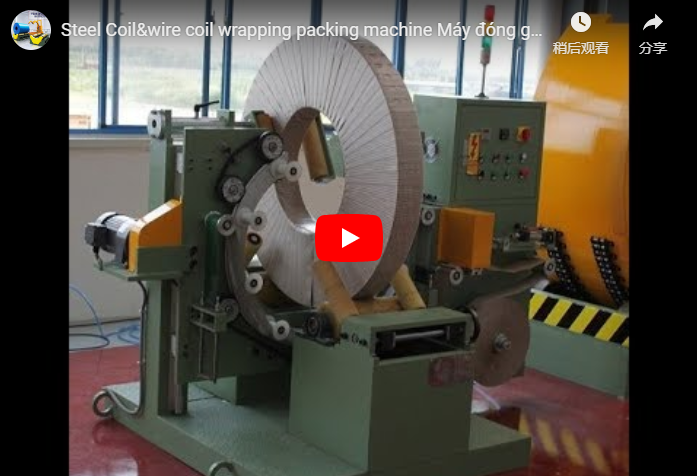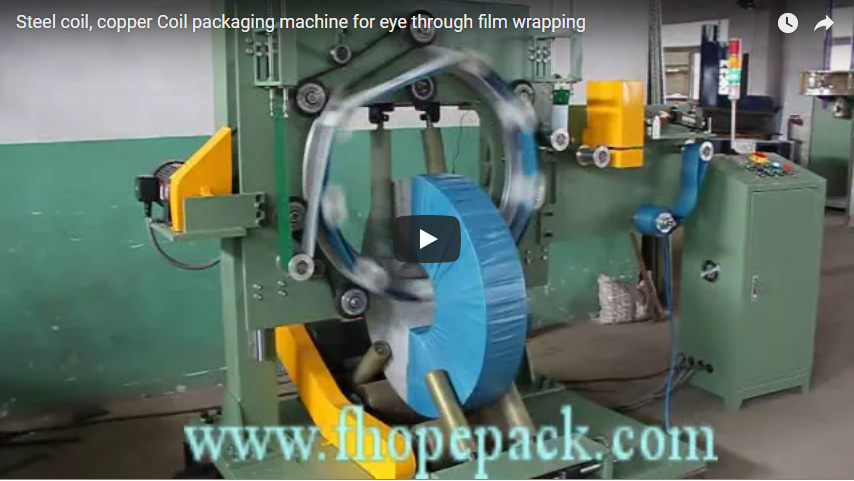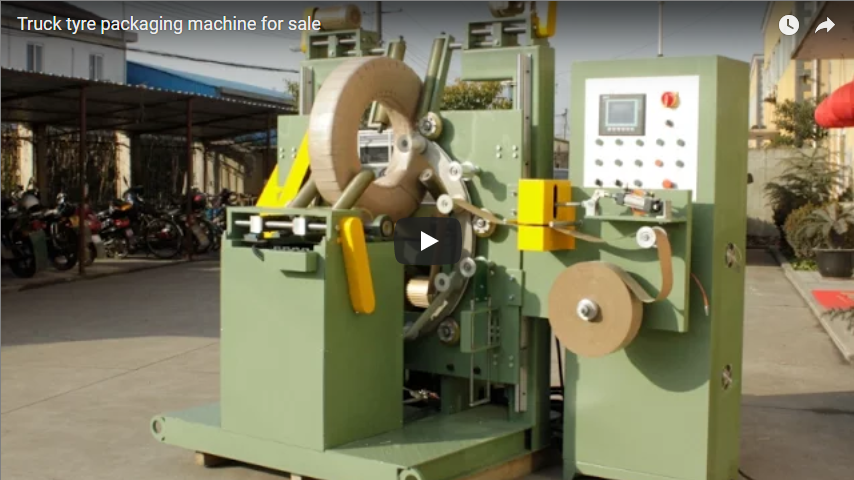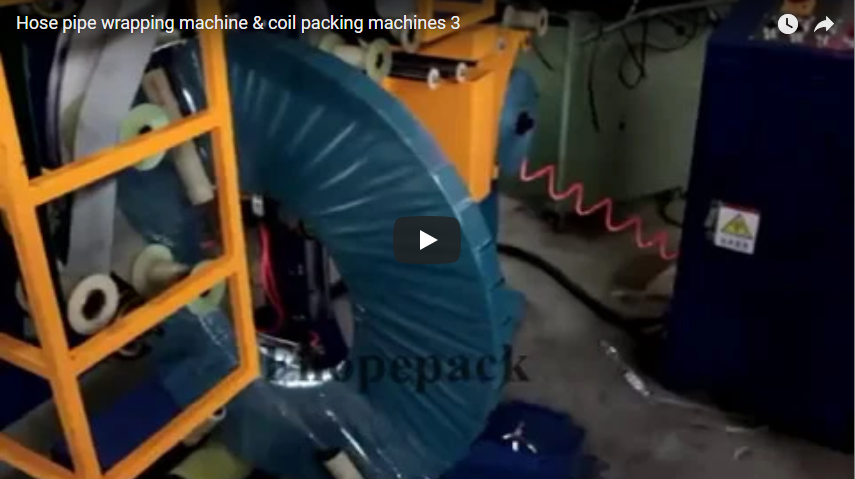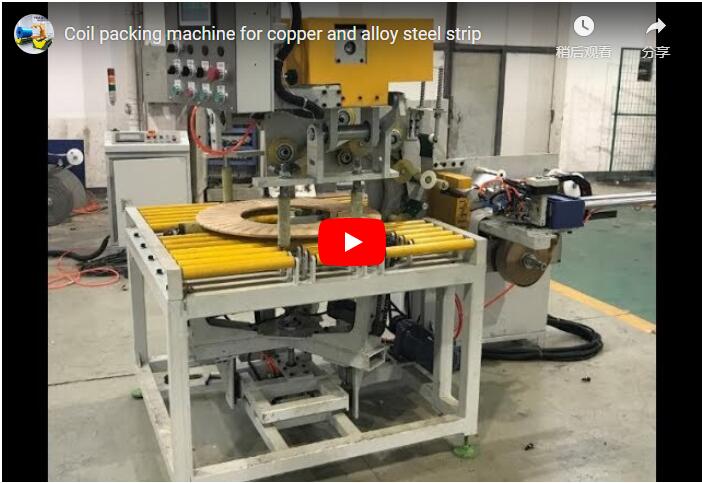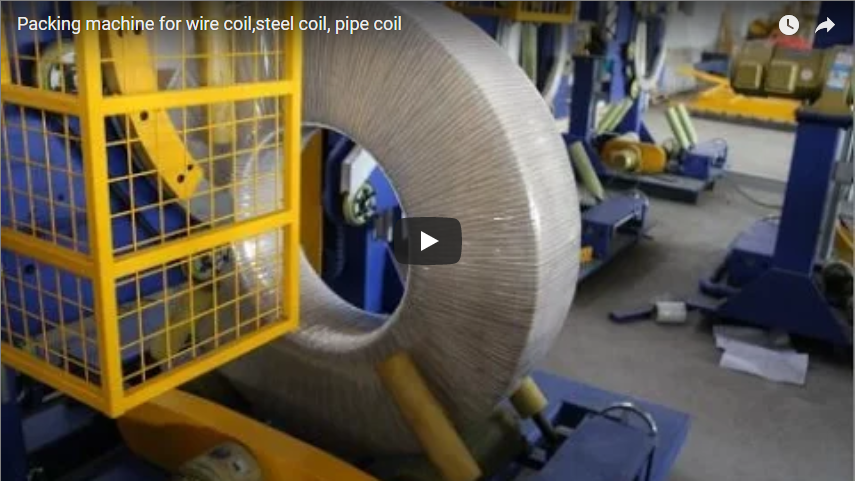Mastering Pre-Strand Wire Coil Packaging: A Technical Look at Automated Wrapping
1. The Challenge of Pre-Strand Wire Protection
Protecting pre-stressed concrete (PC) strand wire coils during transport and storage is critical to preserving their structural integrity and preventing corrosion or damage. These coils, often substantial in size and weight, require robust packaging solutions. Automated wire coil wrapping machines offer a specialized approach, particularly effective for coils already encased in protective paper or requiring additional barrier layers.
2. Operational Overview of the Wire Coil Wrapping Machine
This type of horizontal axis wrapping machine is engineered to automate the application of stretch film, VCI paper, or other protective materials around the circumference of the wire coil. It replaces manual wrapping or less specialized equipment, bringing consistency and efficiency to the packaging process.
The machine typically operates by rotating the coil on support rollers while a wrapping shuttle, mounted on a large driven ring, dispenses and applies the packaging material circumferentially through the coil's inner diameter (ID).
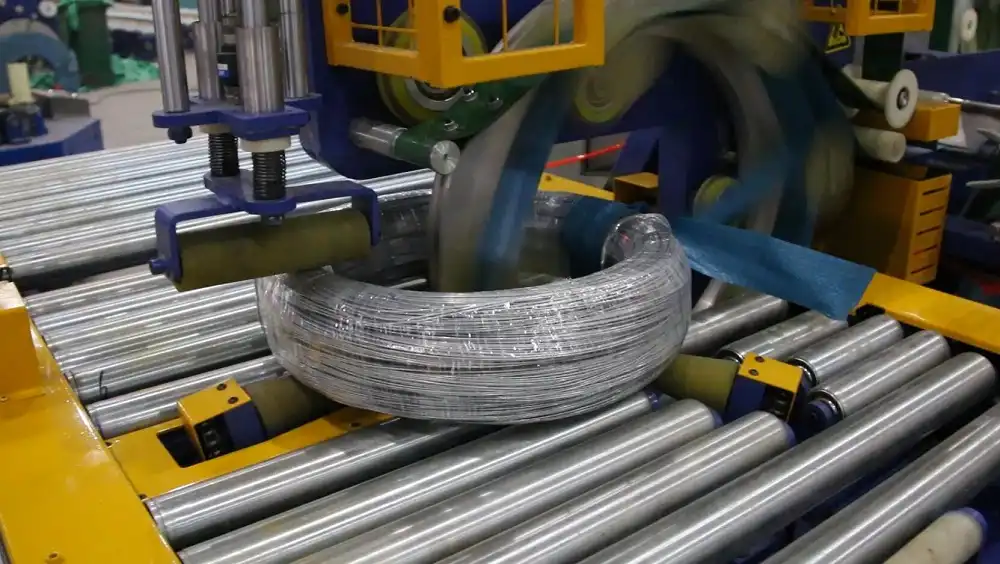
3. Key Technical Specifications and Capabilities
Understanding the machine's parameters is crucial for assessing its suitability for a specific fabrication environment:
-
Coil Handling Capacity:
- Maximum Coil Width: Designed to accommodate coils up to 1400mm wide. Note: Ensure machine throat size corresponds to your maximum coil OD + width requirements.
- Outer Diameter (OD): Typically handles coils in the range of 1000mm to 1500mm.
- Inner Diameter (ID): Accommodates IDs typically from 600mm to 850mm.
- Maximum Load Capacity: Standard models robustly handle loads up to 3 Tonnes (3000 kg). Heavier-duty versions are often available for larger coil weights.
-
Wrapping Material Compatibility:
- Material Width: Utilizes packaging material rolls with widths commonly ranging from 90mm to 120mm. Wider material options may be available on specific models.
- Material Types: Compatible with stretch film, VCI paper, woven fabric tape, crepe paper, and other roll-form packaging materials.
-
Performance Metrics:
- Ring Drive System: Employs a powerful motor-driven ring (often utilizing variable frequency drive - VFD for speed control) to ensure smooth rotation and consistent wrap tension.
- Material Cutting System: Features an automated cutting mechanism (pneumatic or electro-mechanical) with a high success rate (often cited at >99%) to minimize material waste and ensure clean wrap termination.
- Wrapping Layers: Programmable logic controllers (PLCs) allow operators to specify the number of wrap layers (e.g., two or three layers) for enhanced protection against moisture ingress and physical abrasion. Overlap percentage is also typically adjustable.
4. Enhancing Protection with Multi-Layer Wrapping
The ability to apply multiple layers serves distinct purposes:
- Inner Layer: Can be VCI paper or film to provide corrosion inhibition.
- Outer Layer(s): Often stretch film or woven material to provide physical protection, puncture resistance, and load stabilization.
Applying multiple layers ensures comprehensive protection tailored to the specific environmental hazards expected during shipping and storage.
5. Customization and Integration Considerations
While standard models cover many applications, specific production needs might require modifications:
- Heavy-Duty Capacity: For coil weights exceeding standard limits, reinforced frames, larger motors, and upgraded roller systems can be specified.
- Conveyor Integration: Machines can be designed for seamless integration into automated production lines with powered infeed and outfeed conveyors.
- Specialized Controls: Advanced PLC programming for specific wrap patterns, data logging, or communication with plant management systems (MES).
Manufacturers, such as FHOPE and others, often provide Original Design Manufacturer (ODM) services, allowing facilities to procure machines engineered precisely to their unique operational parameters and coil specifications.
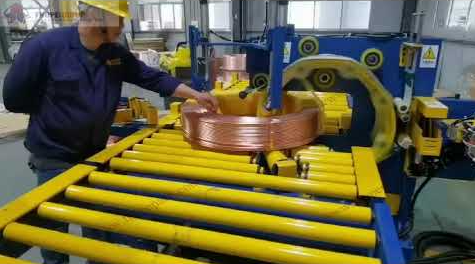
6. Conclusion: Improving Packaging Efficiency and Product Quality
Automated wire coil wrapping machines represent a significant upgrade over manual methods for pre-strand wire packing. Their ability to consistently apply protective materials, handle heavy and large coils, and operate with high efficiency contributes directly to:
- Reduced Labor Costs: Automation minimizes manual handling.
- Improved Package Integrity: Consistent tension and layering enhance protection.
- Minimized Material Waste: Precise control and automated cutting optimize material usage.
- Enhanced Safety: Reduces manual lifting and handling of heavy coils.
By carefully evaluating coil dimensions, weight, required protection levels, and integration needs, fabricators can select or specify a wire coil wrapping machine that significantly boosts packaging quality and operational throughput.

